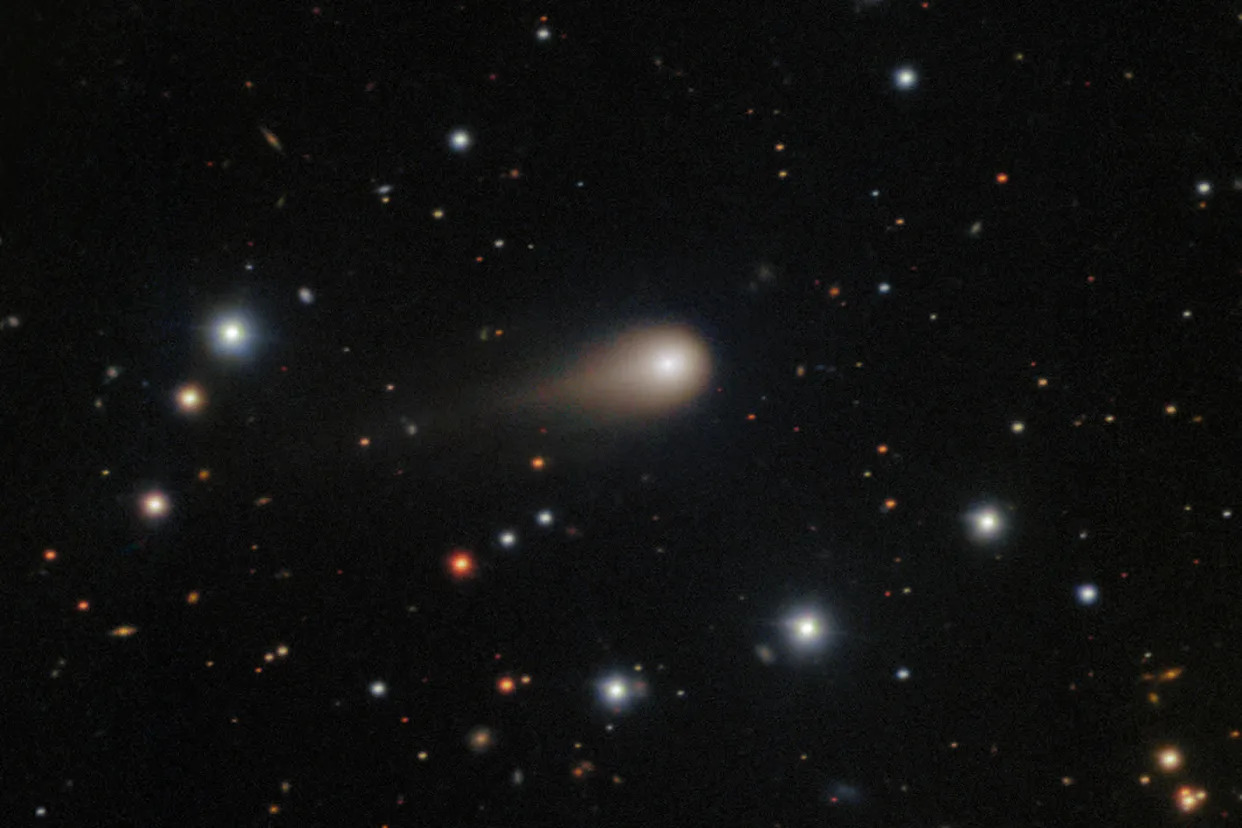An interstellar comet, designated as 3I/ATLAS, is set to reach its closest point to the sun this week, on October 30, 2025. While it has captured the attention of astronomers worldwide, there is no need for concern as it will not come close to Earth, remaining over 170 million miles away from our planet.
Discovered on July 1, 2025, by the NASA-funded Asteroid Terrestrial-impact Last Alert System (ATLAS) survey telescope in Rio Hurtado, Chile, Comet 3I/ATLAS is the third known interstellar object to pass through our solar system. Further analysis of telescope archives revealed that it had been observed as early as June 14, 2025.
Characteristics and Classification
Astronomers have assessed the comet’s nucleus to be between 1,444 feet and 3.5 miles in diameter. Utilizing advanced telescopes, researchers identified that it is composed primarily of ice and is surrounded by a bright cloud of gas and dust known as a coma. As comets approach the sun, their ice and dust vaporize, resulting in a fuzzy appearance and potentially a tail.
The name Comet 3I/ATLAS follows the naming conventions of earlier interstellar objects, such as 1I/’Oumuamua, discovered in 2017, and 2I/Borisov, found in 2019. The “3I” signifies that it is the third interstellar object recorded, while “ATLAS” refers to the astronomical survey responsible for its discovery.
Understanding Its Trajectory and Impact
The comet is on a hyperbolic trajectory, indicating it does not follow a conventional orbital path around the sun. Traveling at approximately 137,000 miles per hour, it is moving too quickly to be captured by the sun’s gravity. Consequently, experts confirm that it poses no threat to Earth.
As it approaches the sun, Comet 3I/ATLAS will be closest to our star just inside the orbit of Mars. Following this closest encounter, it will reemerge on the opposite side of the sun by early December, though visibility will require a telescope.
The scientific community values interstellar objects like 3I/ATLAS because they serve as cosmic time capsules, potentially offering insights into the conditions of other star systems formed billions of years ago. Recent observations have revealed unexpected atomic nickel vapor emanating from the comet, detected at a significant distance from the sun where temperatures are extremely low, about four times the distance of Earth from the sun.
Researchers speculate that the nickel may be interacting with carbon monoxide or other organic compounds, which could facilitate the release of nickel atoms at lower temperatures than typically required for metal vaporization. As noted by Space.com, this phenomenon has intrigued astronomers, prompting further investigation into the comet’s composition and behavior.
In summary, the arrival of Comet 3I/ATLAS offers a unique opportunity for scientific exploration, allowing astronomers to examine an object that may be older than our solar system while ensuring that its path poses no danger to Earth.







